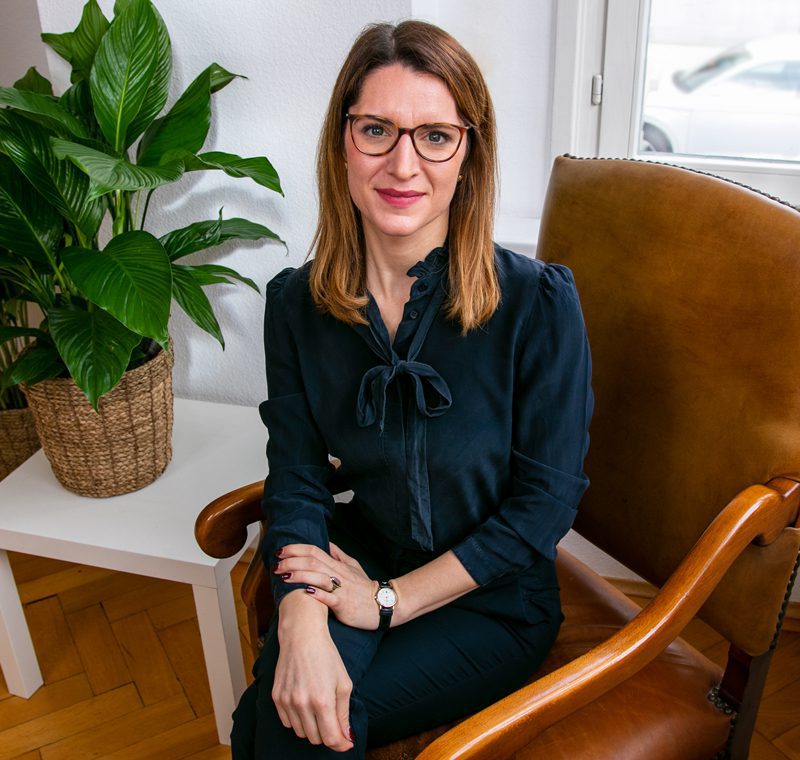The 3-pillar system in Switzerland
The first pillar
The first pillar consists of the state institutions AHV (old-age and survivors’ insurance) and IV (disability insurance). The aim of these provisions is to secure the subsistence needs of the insured. In the event of the death of a person providing for him or her, the insurance is intended to cover the subsistence minimum of his or her survivors in the form of a widow’s/widower’s/orphan’s pension.
The AHV/IV is compulsory for every person who either resides in Switzerland (including those who are not gainfully employed and children) or who is gainfully employed (e.g., cross-border commuters and guest workers).
The second pillar
The second pillar is employee pension benefits. These benefits are intended to make it possible to continue the accustomed standard of living at old age and in the event of disability. As a supplement to the first pillar, the amount of the pensions depends on how much was earned during employment. Together with the first pillar, this aims to achieve a pension income of around 60% of the insured person’s last salary.The second pillar is only compulsory for employees and only a certain part of the salary is compulsorily insured.
The third pillar
The third pillar (also pillar 3a) is the voluntary, individual self-provision of each person. There is no obligation to build up a third pillar, but it is highly recommended. After the first two pillars cover a total of approx. 60% of the previous income, the remaining approx. 40% is the responsibility of each individual. The payment into pillar 3a is tax-privileged up to a maximum contribution.
Consequences of divorce on the three pillars
The first pillar (AHV/IV) is divided in the course of “splitting”. The incomes on which the spouses paid contributions during the marriage are added together in the calculation and each is credited with half. In order for the compensation fund to carry out the splitting after the divorce, the persons concerned must register with the respective office. This does not happen ex officio.
This is problematic if only one spouse has acquired AHV pension entitlements in Switzerland. If the other spouse never worked in Switzerland, he/she has no choice but to apply to the German court for pension rights adjustment
Example: The couple living in Konstanz divorces. The husband (50 years old) worked in Switzerland during the marriage and paid into the AHV/IV-pension there. The wife (50 years old) has worked in Germany and has only earned pension rights in Germany.
In this constellation, the wife must apply to the German family court for pension rights adjustment under the law of obligations. The requirements for this are, however, that the person obliged to equalize himself/herself receives a pension and that the beneficiary himself/herself either receives a pension, is incapacitated or reaches the standard age limit of the statutory pension insurance.
In our case, the wife would have to wait for her ex-husband to collect the AHV/IV pension and for her to reach the standard retirement age of the German statutory pension insurance. She must than apply for an adjustment after the divorce; this does not take place ex officio.
The second pillar is divided by means of so-called pension equalization. The usually different amounts of assets acquired by the couple during the marriage are equalized. The equalization of pension fund benefits is mandatory law. It therefore does not matter which matrimonial property regime the couple has chosen.
Those who took over the majority of the care of the children/relatives and the housework during the marriage were often not able to save as large a pension fund credit as those who were gainfully employed to a greater extent. In principle, the spouses are entitled to half of the pension assets saved by the other person during the marriage in the event of divorce. Here it is important to create a fair division of the pension assets for both spouses. The deviation from the half division can be made either by an agreement between the spouses or by a court ruling.
The termination benefit represents the accumulated retirement assets with a pension fund at the time of the termination date. Advance withdrawals for residential property are added to this before the capital payments during the marriage are deducted.
Premarital assets including interest, cash or capital payments, for example, are not part of the pension equalization. However, the latter may be taken into account in the property settlement or compensated with an appropriate compensation.
The third pillar as private pension provision is part of the matrimonial property settlement. If the Pillar 3a assets were saved during the marriage, they are generally halved in the event of divorce. If the spouses do not receive the same amount of Pillar 3a pension assets, the taxes due when the money is paid out must also be taken into account.
Our international team will be happy to assist you in German-Swiss divorces and clarify the specific details for you. We will also be happy to file an application for pension rights adjustment after the divorce.




